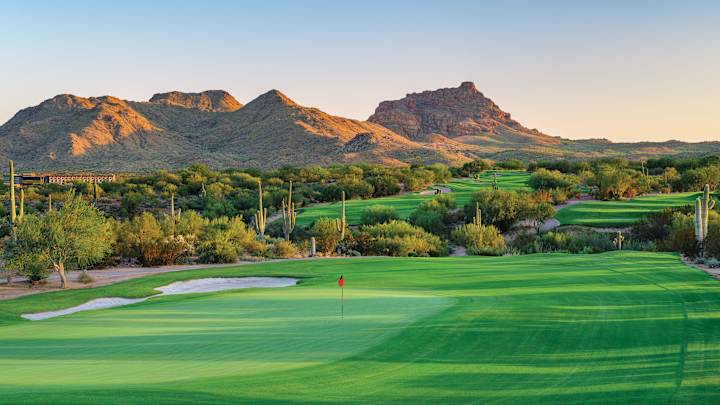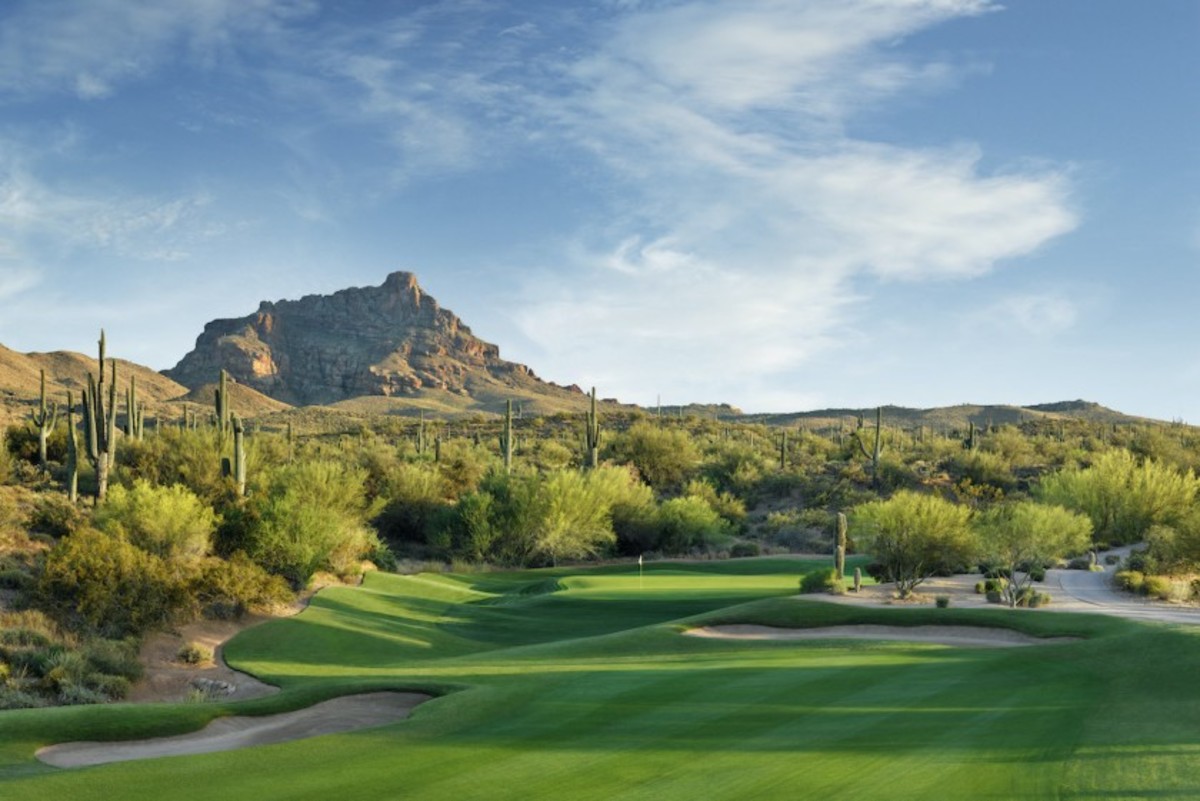We-Ko-Pa's Cholla and Saguaro courses are cause for pause

FORT McDOWELL, Ariz. — If you play either — or both — courses at We-Ko-Pa in the Sonoran desert just outside Scottsdale, Ariz., and find yourself hopelessly absorbed in your golf game, stop. Just take a minute, look up and look around.
What you’ll witness is a natural symphony — mountains rising, rolling and falling in nearly all directions set against an impossibly blue sky. You’re likely to forget about those three bogeys — or three birdies — in a row, at least for a few minutes. Walter Hagen implored us to stop and smell the roses. At We-Ko-Pa Golf Club, you will stop and drink in the desert.
The rocky backdrop of Arizona can be just as striking as the green grass beneath your feet. However, you’re here for the golf and the 36 holes at We-Ko-Pa should get most of your attention. And with good reason.
The Saguaro gets the most attention, having been designed by Bill Coore and Ben Crenshaw and opened in 2006. But the Cholla, designed by Scott Miller, a Jack Nicklaus protégé, and opened in 2001, gets just as much respect from those who do state and national rankings. Both courses are consistently in the upper half of top 100 courses you can play lists and among the top three or four public access courses in Arizona.

And among the paying customers, the preference between the two runs practically right down the middle, says We-Ko-Pa general manager Matt Barr. “We do about 70,000 rounds a year on both courses and the number of rounds is pretty well evenly split,” Barr said “In fact, among the staff, the preference is about even.
“The Saguaro has the brand name of Coore-Crenshaw, who are right now the rock stars of golf course architecture, so Saguaro does get a little more love in the media. But our golfers enjoy both of them.”
The difference between the two is mostly about design philosophy.
“We typically say that Cholla is a more traditional desert golf experience where you’re hitting from pod to pod,” Barr said. “It has a few more forced carries; the greens are a little bigger. Whereas, we call Saguaro a traditional layout in a desert setting. The fairways are a little more forgiving but the greens are a little smaller, more undulating.”
We-Ko-Pa was built on land of the Yavapai Nation of Fort McDowell, a community of 895 on a reservation just 10 miles long and four miles wide. The tribe owns and operates the courses, which go along with the Fort McDowell Casino, which was the first casino in Arizona and started as a Bingo hall in 1984, and the Resort, a 246-room hotel.
We-Ko-Pa, is Yavapai for “Four Peaks,” which are the most prominent mountains on the land. Also seen from the golf courses are the McDowell Mountain, Red Mountain and the Superstition Mountains.
After the casino was in full operation, the Yavapai wanted to expand their revenue options. The tribe also had a sand-and-gravel and a concrete business. “The casino was hugely successful in the 1990s since it was the
only game in town,” Barr said.

Because of the success and notoriety of the golf courses, the Yavapai decided to re-brand the casino and hotel. A new, 166,000-square-foot casino is under construction and is expected to be open this summer. In addition, all 246 rooms of the hotel have undergone a renovation. As a result, the whole package will be called the We-Ko-Pa Casino and Resort.
The golf courses have had major improvements the last four years. The Cholla underwent a renovation in 2016 and all the greens were replaced and re-done with MiniVerde Bermudagrass. About seven acres of turf was removed to contribute to water conservation. In 2018, the bunkers on Saguaro were renovated and upgraded.
In We-Ko-Pa’s beginning, Arizona golf legend Ed Francese was the club’s managing partner and oversaw the construction and operation of both courses from 2001-13. It was under his guidance that We-Ko-Pa burst into national prominence. In 2013, the tribe decided to take over the club operation.
“Ed had more impact on the success of the golf courses than anyone,” Barr said. “We stuck with his business model of maintaining the integrity of the rates and great customer service and a product that people really want to play, not because of the rate but because they’re really great golf courses and maintained well.”
Sign up to receive the Morning Read newsletter, along with Where To Golf Next and The Equipment Insider.
